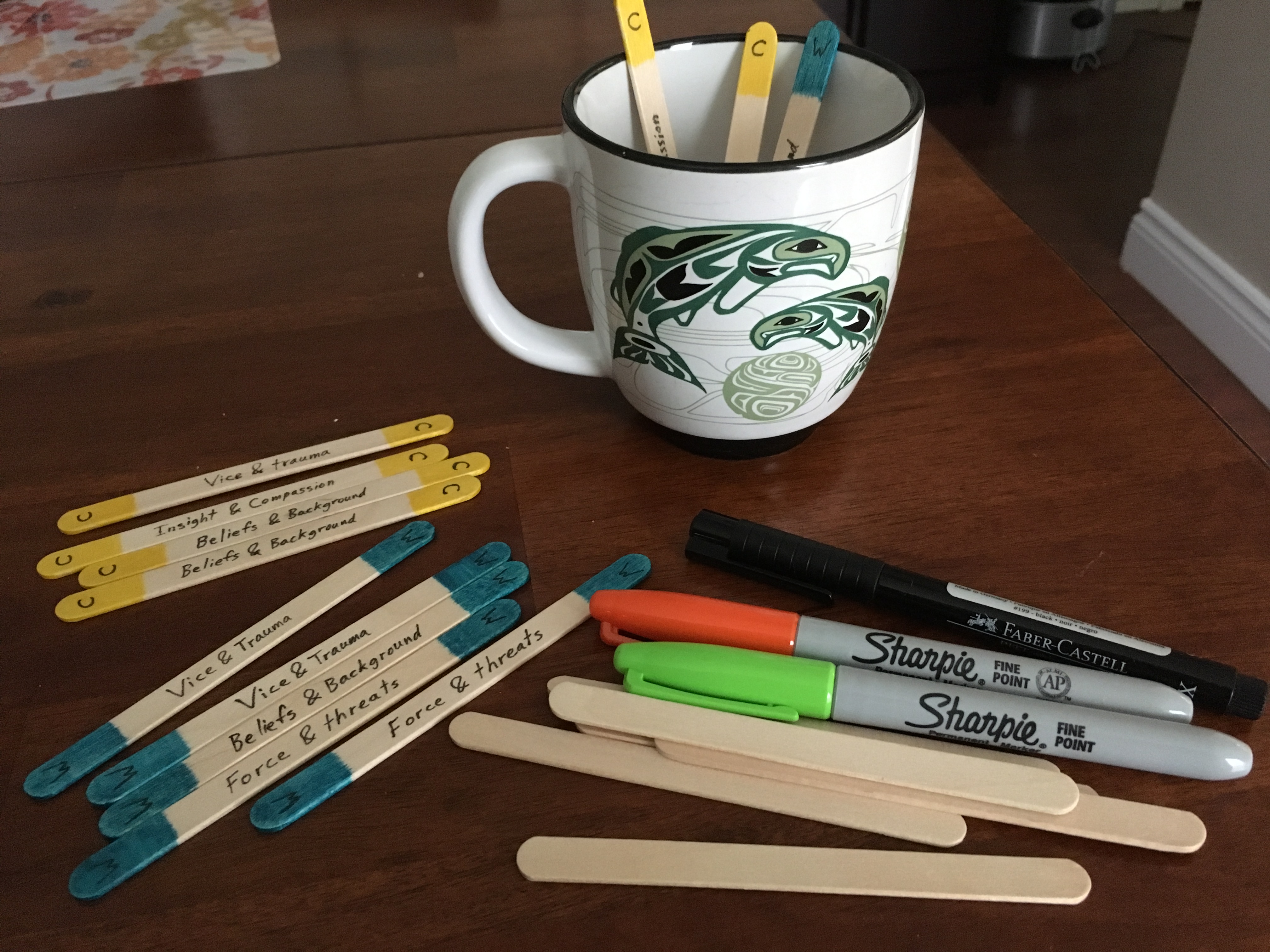Hello there everyone, long time no hello!
Hello there everyone, long time no hello!
I am writing in today because I am going off on a grand experiment; my one tabletop group has been brave enough to be willing to try doing a Round Robin GMing game of Blades. It has been an idea of mine to try for quite awhile and I am looking forward to how it goes.
I am interested in seeing if anyone else has done such a thing yet and if so, how did it go? What issues did you run in and what things really helped make it work right? I’m going to list off the things we’re trying to do to ensure the gameplay will be as smooth and as friendly, since for some this will be their first GMing ever.
– Firstly, we decided we’d go with the Starting Situation in the book and have all our stuff focus in Crow’s Foot; our Hunting Grounds and our Lair. It will ensure that all our stuff is strongly focused in a single district so we can focus in more.
– We have decided, after talking about it, that we will either do Assassins or Bravos. They’re relatively simple to create Scores for and they’d mesh the best with the War in Crow’s Foot. We’d add Shadows in there too but I run a Shadows game on the opposite week so we wanted a change of pace. Cult & Hawkers get a lot more detailed heavy and no one has any experience with Smugglers (which is something I’ll have to change later)
– We’re planning on switching GMs by the score, not the session. To give an idea of what this looks like, we’ll say Player 1 has volunteered to start, Player 2 has volunteered to do 2nd score, and Player 3 will run the 3rd score.
Player one starts the game as usual; starting situation introductions, running and completing a score, payoff & heat, entanglements, and then downtime. Once Free Play has started, Player 1 specifically asks Player 2 if there is anything they are trying to do during Free Play. If so, they do the roleplay that may happen until it is done. Once it is, Player 2 assumes control of the game. Their character disappears, Player 1’s character returns, and the game picks up from Free Play.
Player 2 would run Free Play for everyone else, including Player 1’s character, set up the Score, run through it and complete it, do Payoff & Heat, Entanglements, Downtimes, and then do any roleplay with Player 3 they wanted done in Free Play. After that, Player 3’s character disappears and Player 2’s character returns while Player 3 takes over running the game.
I thought of doing it this way in order to not have to worry about a game ending mid-score and it switching over GMs while also making sure that the player that will be GMing soon still has a chance to do some Free Play stuff. We’ll see how execution actually goes.
So I would really love to hear any suggestions, advice, issues people had with it, hopes, or any other ideas or thoughts. I’ve been pushing on my players very hard to read the book even moreso than they are now so they have a better grasp of how the game works. Hopefully, they’ll follow through.
This Saturday is Session 0, we’ll be making characters and the crew and preparing all the good stuff we need for game.

